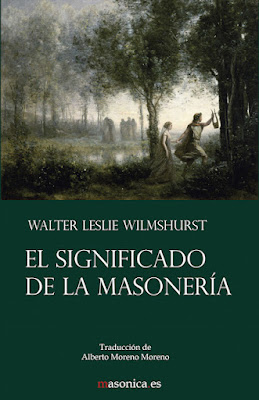The first reference I found concerning the debt owed by Freemasonry to the Rule of St. Benedict was in Patrick Négrier’s Le Rite des Anciens Devoirs. Old Charges (1390-1729). The manuscripts of Old Charges had been studied for more than a century, but the furthest scholars had gone was just to order them by families, taking into account their formal characteristics. However, they had barely penetrated their content, neither had they analyzed the reasons for their evolution and changes over more than five centuries, until Patrick Négrier proved that, with a small pocket book that really came to the crux of the matter, it was possible to advance Masonic historiography much further than with just a long series of merely descriptive studies.
In Le Rite des Anciens Devoirs, the French philosopher asserted that the Regius manuscript was “a dialogue between Plato’s Republic and St. Benedict of Nursia’s Regula Monachorum.” This assertion was entirely justified, since the author of Regius wrote the part of the manuscript alluding to the Initiation inspired by a fragment of the Benedictine Rule, Chapter vii De humilitate (Of humility), just as the entire ceremony of Old Charges followed Chapter lviii Of the manner of receiving brothers. This aroused my curiosity, so I began to develop an interest in the Rule of Saint Benedict and its influence on Freemasonry.
While reading different versions of the Rule, I became aware that many usages and customs that we still practice in lodge were already described in the Rule (as all the book is focused on this subject, I will not enumerate them now). Nonetheless, it was at the moment that I started browsing the Cistercian Ritual that I was astonished by the similarity between monastic and Masonic usages. The rituals of monastic orders can be downloaded freely from the internet, and the reading of the Cistercian Ritual allows to appreciate how the ceremony of Masonic Initiation is largely a monastic Profession adapted to the needs of Masonic guilds. Not only were we doing the same things as prescribed by the Rule of Benedict; we were also doing them in the same way as the Cistercian Ritual established, and in the same order.
The version of the Cistercian Ritual I was using was not an ancient one. It was the latest version, released in 1998 in French and translated into English and Spanish in 2004. Despite more than 800 years having passed since Anglo-Saxon masons began to be received as lay brothers in Cistercian abbeys, and almost 500 years since monasteries were dissolved in England, the similarities were still evident. In fact, in view of this strong correlation, rather than considering the Rule of Benedict as an influence on the Masonic ritual, maybe we should consider that the Rule and the Cistercian Ritual together formed the crucible where the Masonic ritual was forged. This did not happen for a religious or ideological purpose (in 12th century Europe it would have never made sense to raise an intellectual discourse beyond the bounds of Christianity), but for a merely practical reason: stonemasons needed a ceremony to make their new Fellowcrafts, and they adopted the rituals that they were used to seeing and were familiar to them. This does, therefore, raise another question: what happened before the Benedictine and Cistercian monks?
Masons’ guilds are normally related to Roman collegia fabrorum; and there are similarities indeed. Nonetheless, once Rome left British soil, the collegia fabrorum also disappeared, to the point of having to import stonemasons from Gaul during the 7th century in order to erect religious buildings. In this sense, it looks like masons did not have any history at all during the Early Middle Ages in England, and they were brought from Frankish soil in a period when it was intended to impose the Rule of Saint Benedict in all Carolingian monasteries.
The incorporation of masons in the Cistercian Order as lay brothers (called converse brothers or converts) occurred from the very moment that the order arrived in England in 1128. The first manuscript of Old Charges available, the Regius manuscript, goes back to 1390, and the dissolution of the monasteries due to the Anglican schism took place between 1536 and 1540. During these 400 years, operative masons celebrated the creation of a new Fellowcraft through a ceremony in which the Old Charges manuscript was read, after which the new Fellowcraft swore to abide by its content. Because first lodges were constituted by converse masons in monasteries, our operative ancestors imitated a wide variety of usages and customs they used to see daily in the monastic environment. These elements have endured until the 21st century, and we practice them systematically in our regular meetings, without our being aware of their antiquity, not to mention their monastic origin. This Benedictine and Cistercian heritage in the Masonic ritual is what we are going to study in a detailed manner in this book.
Alberto Moreno Moreno
























